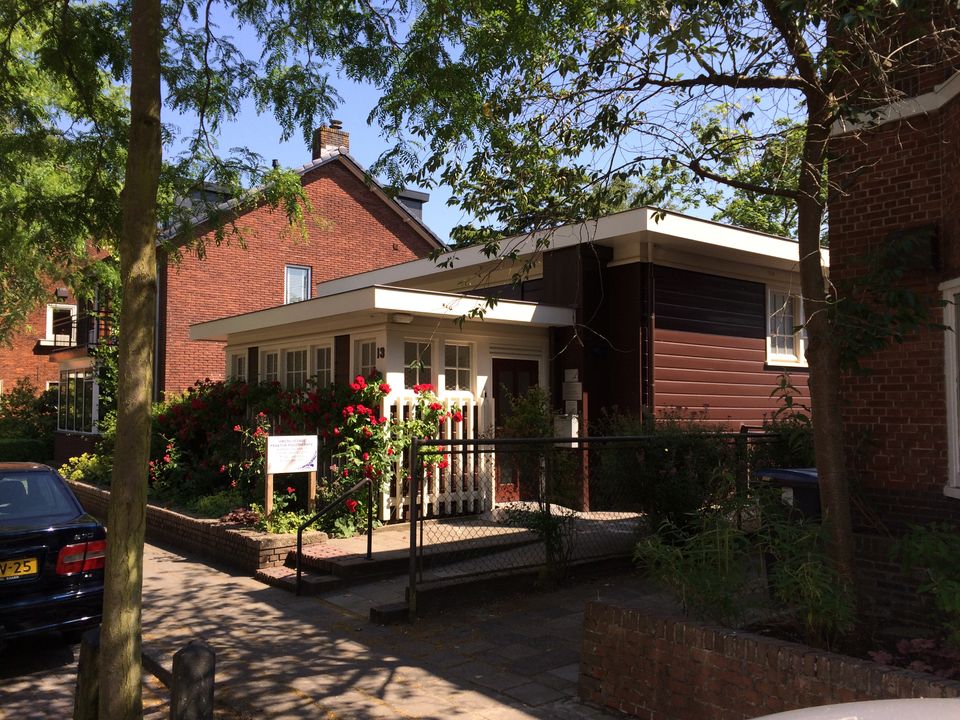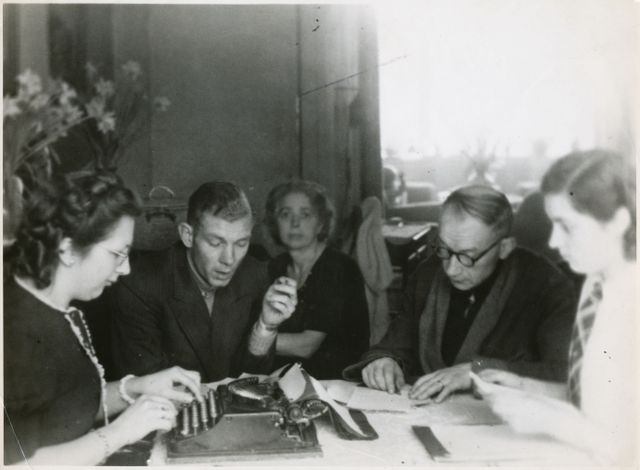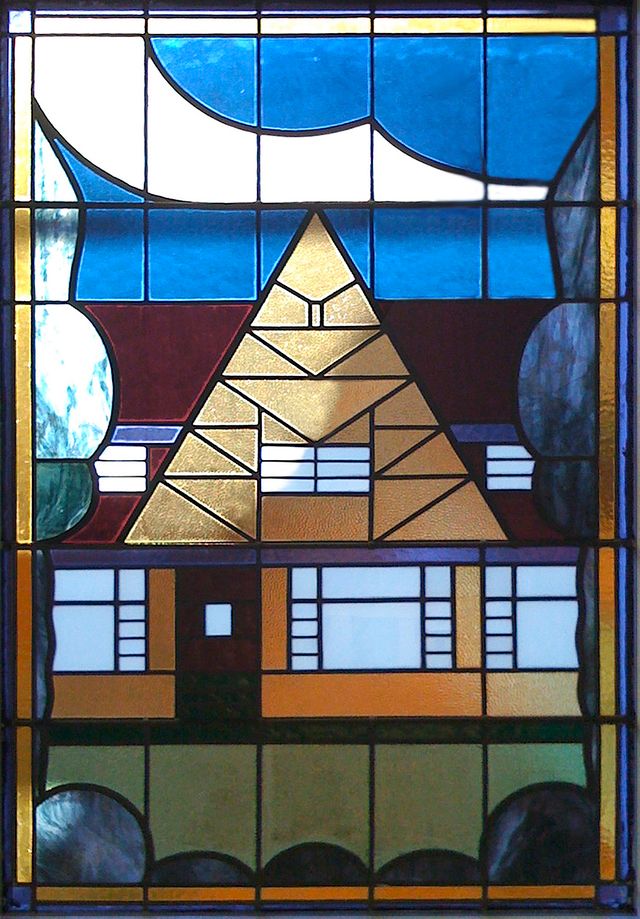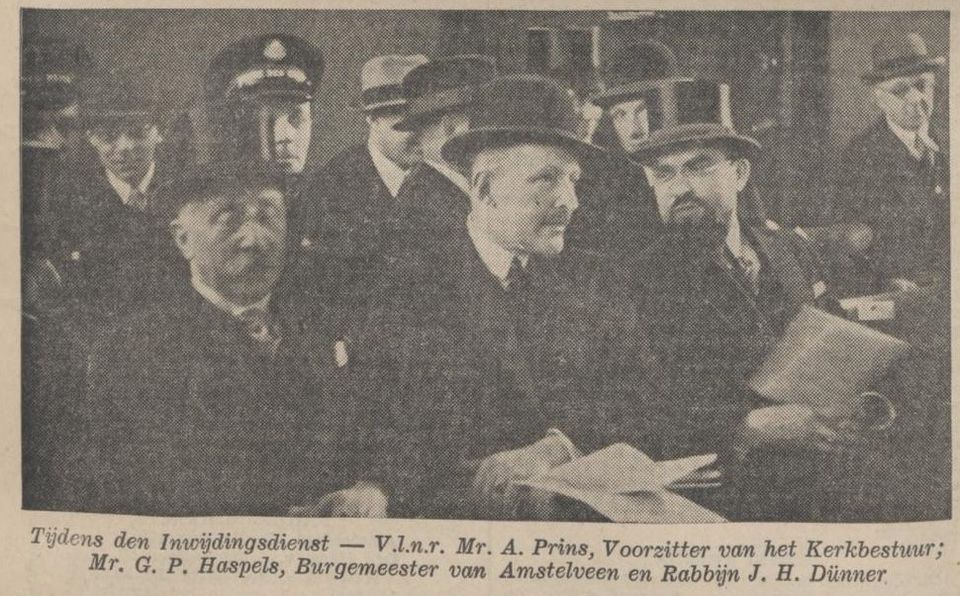
Panel 3 synagogue
Architect F.A. Warners (1888-1952) drew the street plan for Randwijck in 1925. Warners was a well-known representative of the Amsterdam School style of architecture. He designed the houses on the Randwijcklaan and the surrounding streets in that style, using stained glass, red bricks and decorative masonry. Among all those bricks, a wooden building looks a bit odd. In 1932, Warners designed this temporary building for the Dutch Reformed Church. From 1938, the Jewish municipality used it as synagogue. In 2018 it was given the status of municipal monument, saved by local residents from demolition.
Deportation
The synagogue also served as a Jewish school from …
Architect F.A. Warners (1888-1952) drew the street plan for Randwijck in 1925. Warners was a well-known representative of the Amsterdam School style of architecture. He designed the houses on the Randwijcklaan and the surrounding streets in that style, using stained glass, red bricks and decorative masonry. Among all those bricks, a wooden building looks a bit odd. In 1932, Warners designed this temporary building for the Dutch Reformed Church. From 1938, the Jewish municipality used it as synagogue. In 2018 it was given the status of municipal monument, saved by local residents from demolition.
Deportation
The synagogue also served as a Jewish school from 1941 onwards. Under the German occupation, Jewish children were no longer allowed to attend state schools. It was one of many humiliating restrictions on their liberty. Jews from Amstelveen were forced to move to Amsterdam in May 1942. Carrying no more than one suitcase, 239 Jews from Amstelveen boarded the train. Most of them did not return. They were murdered in one of the camps. A few Jews from Amstelveen were able to go into hiding and survived the war.







